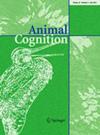Bees are flexible and adaptive learners, capable of learning stimuli seen on arrival and at departure from flowers where they have fed. This gives bees the potential to learn all information associated with a feeding event, but it also presents the challenge of managing information that is irrelevant, inconsistent, or conflicting. Here, we examined how presenting bumblebees with conflicting visual information before and after feeding influenced their learning rate and what they learned. Bees were trained to feeder stations mounted in front of a computer monitor. Visual stimuli were displayed behind each feeder station on the monitor. Positively reinforced stimuli (CS +) marked feeders offering sucrose solution. Negatively reinforced stimuli (CS−) marked feeders offering quinine solution. While alighted at the feeder station the stimuli were likely not visible to the bee. The “constant stimulus” training group saw the same stimulus throughout. For the “switched stimulus” training group, the CS + changed to the CS− during feeding. Learning was slower in the “switched stimulus” training group compared to the constant stimulus” group, but the training groups did not differ in their learning performance or the extent to which they generalised their learning. The information conflict in the “switched stimulus” group did not interfere with what had been learned. Differences between the “switched” and “constant stimulus” groups were greater for bees trained on a horizontal CS + than a vertical CS + suggesting bees differ in their processing of vertically and horizontally oriented stimuli. We discuss how bumblebees might resolve this type of information conflict so effectively, drawing on the known neurobiology of their visual learning system.


